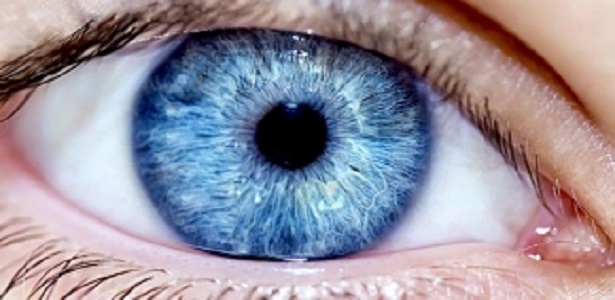“The eyes are the windows to the soul” as one well known saying goes. However, there’s just more to the eyes than, well, meets the eye. They allow us to see, first and foremost, as well as allow us to distinguish shapes and sizes at first glance (literally). They also help us recognize our friends and our loved ones. What your eyes do isn’t just limited to these though; so here are 25 crazy facts about your eyes.
25. Eye color can change. Neither blue nor green pigments are ever present in the human iris or ocular fluid. Eye color is therefore something like the sky, it depends on the lighting conditions, especially for lighter-colored eyes.
24. If your eyes are blue, you share a common ancestor with every other blue-eyed individual in the world. The very first person to ever have blue eyes lived around 6,000 to 10,000 years ago. Back then, everyone had brown eyes.
23. Each eye contains 107 million cells and all are light sensitive. Seven million “cones” helps you see color
and detail while the 100 million “rods” help you distinguish black and white. So, less than a tenth of your visual receptors actually detect color.
22. 20/20 vision = normal vision. This number is largely arbitrary but eye doctors determined that people ought to be able to read a chart from 20 feet away. This is normal vision under normal lighting conditions.
21. If you wear glasses that flip mages upside down, your brain corrects your vision. Even though you’d see things upside down, your brain will eventually adapt and you will begin to function as though you are seeing
things right side up (even though you’re really not). There have been several experiments done on this.
20. The eyes blink on an average of 17 times per minute, 14,280 times per day and 5.2 million times a year. Fun fact: you blink more when you’re talking than while you’re reading, We’re not sure about singing though…
19. People say “in the blink of an eye” because it’s the fastest muscle in the body. A blink usually lasts 100 to 150 milliseconds and it’s possible to blink five times in a second.
18. You’ll need reading glasses when you’re older. For around 99% of the population, the age they’ll first need reading glasses is between 43 and 50. This is because the lens in your eye slowly loses its focusing ability with age.
17. The eye’s lens is quicker than any camera’s. Right behind the pupil is the lens, which focuses on objects you look at. Take a moment to look around a room and think about the various distances you’re focusing at. Each time, you do this, your eye’s lens instantly changes focus without you even being aware of it. Compare that with a camera’s lens which takes a few seconds to focus between this distance to the next.
16. Blinking happens to be an enormously important eye function. Blinking helps remove any debris on your
eye’s surface by spreading tears over them. The tears help moisten and lubricate the eyes and they also have important anti-bacterial properties.
15. Everybody gets cataracts as they get older.
You could think of cataracts as having similarities to getting gray hair in that it’s just a normal, natural change as you age. The average age people first get cataracts is around 70 years old.
14. Diabetes is often first detected during an eye exam.
Those who suffer from type 2 diabetes are often symptom-free, meaning they don’t even know that they’ve got it. This type of diabetes is normally picked up during eye exams as it could be seen as small
haemorrhages from leaking blood vessels at the back of the eye.
13. You see with your brain, not your eyes.
This may sound obvious but many times blurry or poor vision isn’t caused by the eye at all. The poor vision stems from something going wrong in the visual cortex of the brain. There’s a lot that can go wrong with the ocular system.
12. Your eyes can adapt to blind spots.
Specific eye conditions (e.g. glaucoma) could lead to blind spots in your vision. This can prove to be immensely debilitating if it wasn’t for the brain and the eyes abilities to adapt, making such blind spots disappear, similar to the way it adjusts the upside down vision we mentioned earlier. It does this by “suppressing” the blind spot in your affected eye and allowing your good
eye to fill in any “blanks.”
11. 20/20 vision is not the best vision.
In a typical eye test chart, 20/20 vision is the line that’s second from the bottom. The line that’s below it is even smaller and if you can see it, this means you have 20/16 vision. The best recorded human vision, however, was 20/8 which means you could see what normal people see at 8 feet at 20 feet.
10. Your eyes water when they’re dry.
Tears are made up of three different components, namely fat, mucus and, of course, water. If these three components aren’t exactly in their right quantities, your eyes could become dry. Your brain responds to such dryness by producing more of them!
9. Eyes heal quickly.
With the proper care, it will only take around 48 hours for the eye to repair a corneal scratch.
8. Newborns don’t produce tears. In spite of their crying sounds; babies tears don’t begin to flow until they’re around 4 to 13 weeks old.
7. Doctors have yet to find a way to do eyeball transplants. The optic nerve, which connects the eyes to the brain, is too sensitive to successfully reconstruct.
6. Eye measurements.
On average, an eyeball is about an inch in diameter and weighs around 0.25 ounces.
5. Heterochromia.
This eye condition happens when a person is born with two different colored eyes.
4. Eye muscles.
Out of every muscle in the body, the ones that control the eyes happen to be the most active.
3. Working parts.
Your eyes are made up of more than two million working parts to make them fully functional.
2. Shark eyes.
Shark corneas are very similar to the ones we humans have. Because of that similarity, they’ve been used as replacements in human eye surgeries.
1. Curable conditions.
80% of vision problems around the world are avoidable or even curable. Advancements in Lasik surgery, as well as preventive care through supplements and diets, contribute to this.

